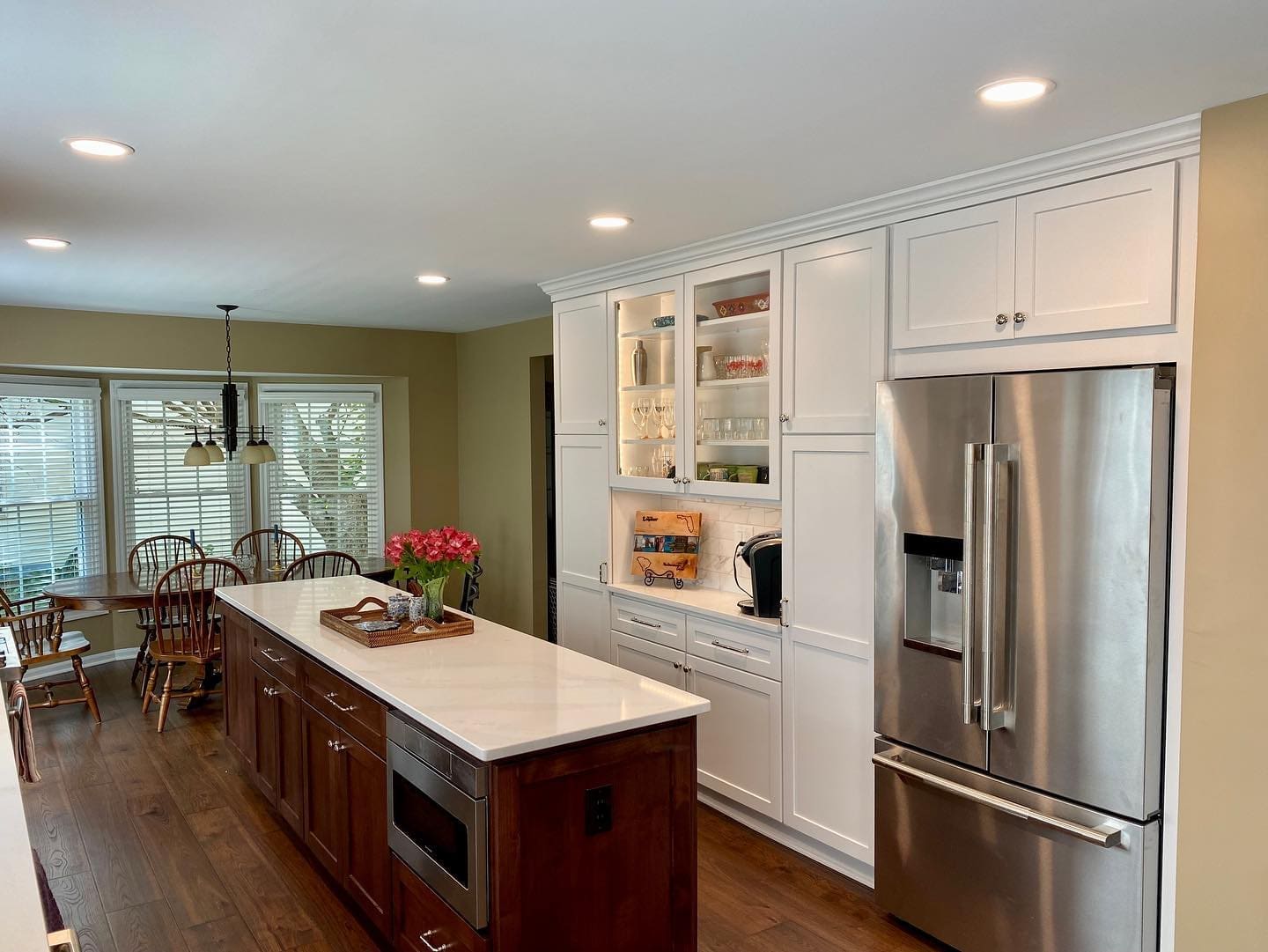Every household has a different lifestyle, and that includes a unique kitchen lifestyle. Your kitchen lifestyle will be determined by several factors. The first, of course, will be the size of your household. A family with children or teenagers will naturally have a very different kitchen lifestyle than a couple or individual without children.
Small Children
The family with small children will have safety considerations that an adult household would not be concerned with. Keeping potentially dangerous items and substances out of reach of the children should be factored into your layout and storage choices for your kitchen. Cabinet locks and rounded corners are frequent safety choices to help kid-proof a kitchen. Appliance choices also need to be made with the kids in mind. A refrigerator with a door alarm can be very helpful for any family, but especially those with small children (or teenagers) who love to help themselves from the refrigerator, but don’t always close the doors tightly. Safety isn’t the only concern when designing a kitchen for a household with children. If the cook in the house enjoys sharing cooking experiences with the smaller members of the family, your kitchen should be designed with a work area that is accessible and safe for those junior chefs. Even if you don’t have children living in your household, if you frequently have them as visitors to your kitchen, you may still want to take some of these considerations into mind when designing your kitchen.
Cooking Style
Some people practically live in their kitchen, but that isn’t true of everyone. The reasons behind your time in the kitchen may also very. The amateur gourmet or the frequent baker will have different requirements than the cook who prefers the five-minute meal. Both the gourmet and the baker will want plenty of prep room and workspace in the kitchen. The baker will probably put more priority over including a warming oven than a microwave in their appliance selection. The baker also will want a cabinet with dividers for their many baking sheets, so they can easily slide them in and out of their slots. For the gourmet, a gas range is a must, as are wine racks and plenty of storage for pots and pans.
Not everyone who does a lot of cooking is necessarily a gourmet or a baker. You may be cooking for a large family or you may enjoy entertaining guests at your dining table. Some cooks also prefer to have the kitchen all to themselves when they’re cooking, while in other households, meal prep is a shared activity. The singular cook will not need near as much space in their kitchen as will the couple that makes their meal preparation a joint effort.
The cook who wants to be able to keep an eye on her children or socialize with guests or the family while she’s cooking will want an open-ended kitchen layout. This may mean having the cooking and prep area in an island, so that her back is not turned away from the kitchen entrance, or it may mean having a low eating bar at a peninsula that separates the kitchen from the dining or living area. For the truly social kitchen, having an eating area at the center island or within the confines of the kitchen can be a big priority.
Meal Frequency
How often meals are actually cooked and served from your kitchen is also an important factor in determining your kitchen layout and design. Are breakfast choices usually cold cereal, toast, bagels and fruit? Those quick, on the run, morning starts don’t require a chef or formal dining room. Easy access to dishes and breakfast food, along with stools at a breakfast bar will usually suffice. If omelets, waffles, French toast and pancakes with eggs and sausage are the standard, then breakfast requires a bit more time and prep area, as well as a table and chairs for dining. What about lunch? Is that seldom on the menu, or is lunch part of your dining routine at home on a regular basis?
The evening meal is generally the most frequent when it comes to cooking in almost any household. With hectic and varied schedules, however, even this meal is not a daily occurrence in many homes today. Even if you love to cook, if you seldom do so, your kitchen should be designed accordingly.
Another important aspect of your kitchen lifestyle is your entertaining lifestyle. Since, in almost every culture entertaining guests centers around food and drink, you’re entertaining lifestyle must be taken into consideration when you design your kitchen. In our next post, we will discuss some of the features that can enhance your kitchen’s hospitality.






